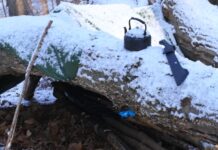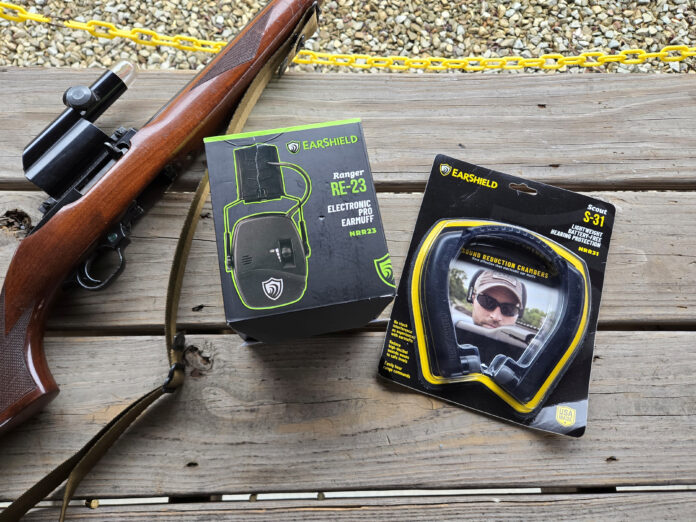
While most of you are probably familiar with Otis Technology because of their excellent gun cleaning products, you may not know they make some great hearing protection as well. I’ve been working with a set of their electronic Earshield Ranger earmuffs and Earshield Scout headset over the summer. Let’s take a look at how they performed.
Earshield Ranger Electronic Pro Earmuff
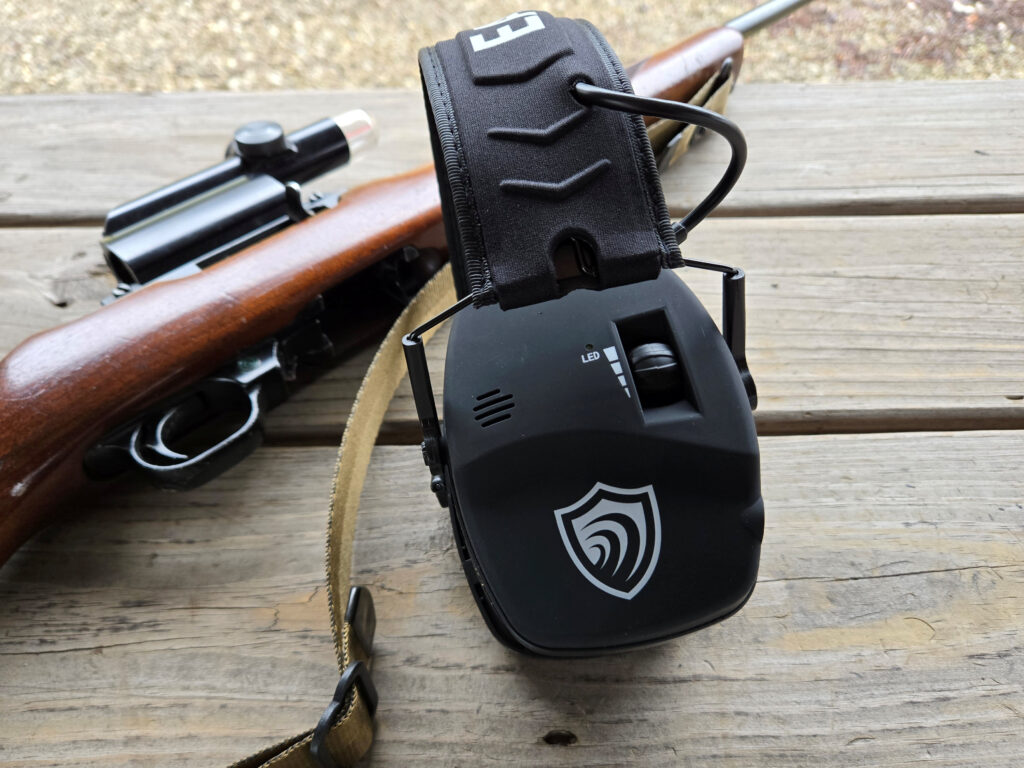
I had a set of electronic earmuffs years ago, and wasn’t a fan. The battery life wasn’t great, and it was a pain to change batteries. You had to pull the foam out of the inside to get to the battery compartment. I traded them off at some point and had kind of given up on the idea. Until SHOT Show this year, that is. I got to talk to the folks at Otis about their EarShield Ranger Electronic Pro Earmuffs and decided to give the concept a second chance.
The Earshield Rangers are low-profile muffs, and they fold up to fit in your range bag. They have a wide, soft, adjustable headband and gel ear cups. You can even get a good seal with glasses on. The ear cups are easily replaceable as well, with a snap-in design.

The Ranger offers 23dB noise reduction while also offering amplified hearing. The headset has 5x noise amplification, so you’ll have no problems hearing range commands or regular conversation. Essentially, it enhances your hearing at normal noise levels and cuts off when it passes 82dB. It cuts off in an ultra-fast 0.5 milliseconds.
The control dial is on the outside of the left muff. It has an LED power indicator so you know if the muff is turned on. It also has a 4 hour auto shut-off to conserve battery life. Both of those are welcome features compared to my old muffs. Further, battery change is simple with an easy-to-access compartment on the outside of the muff. It only uses two AAA batteries as well. I think my old headset used 4 AA’s if I recall correctly.
There’s also an auxiliary port on the headset. A jack and cord are included as well, so you can easily connect to your phone if you want. Otis also makes a Bluetooth version of the Ranger as well, if that’s your thing. MSRP on the Earshield Ranger is $73.49. Which I think is pretty competitive for hearing protection with these features.
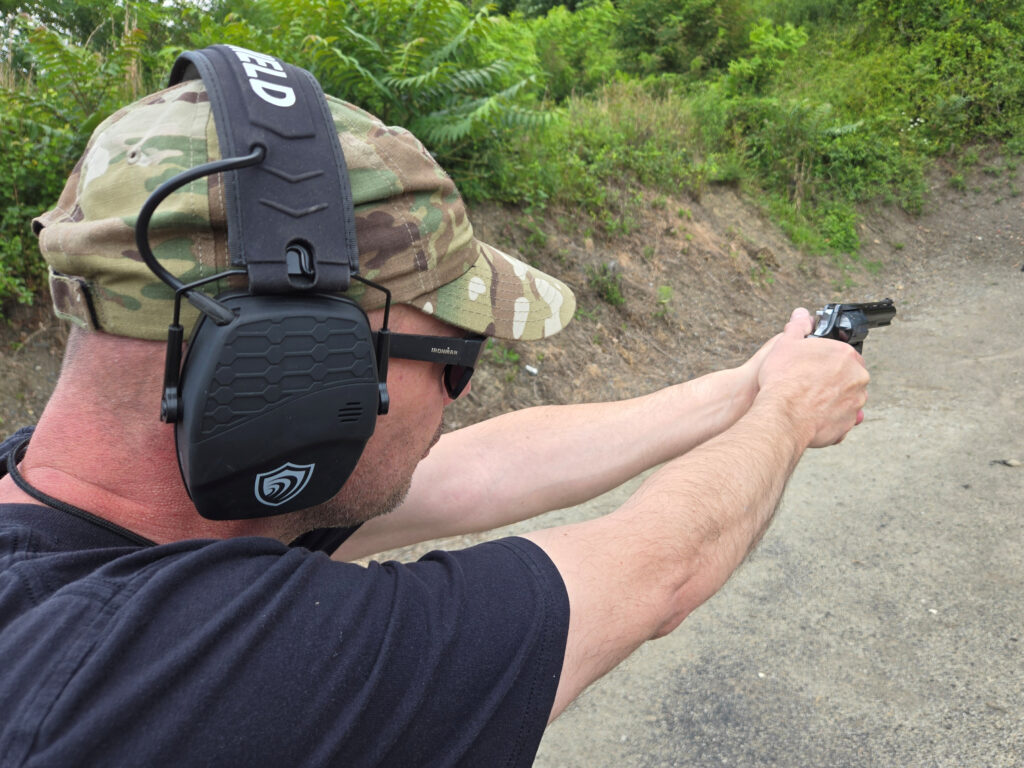
Earshield Rangers on the Range
Despite a brutal summer of torrential rain, high temps, and humidity, I still got a fair bit of shooting in this summer. I shot a good amount of pistol, some shotgun, and various long guns. The Earshield Rangers were comfortable even during multi-hour range sessions. Battery life was very good as well. Which I was pleased with since that was a big gripe on my old set of muffs. I swapped batteries once over the summer, but I used the headset a lot.
The amplified hearing works great. I have pretty bad tinnitus from years of shooting and working on the flightline in the Air Force. Probably from loud music when I was young and dumber, too. Sometimes hearing with conventional plugs or ear pro is rough. The amplification of the Ranger works very well, though. It was generally clear and distortion-free.
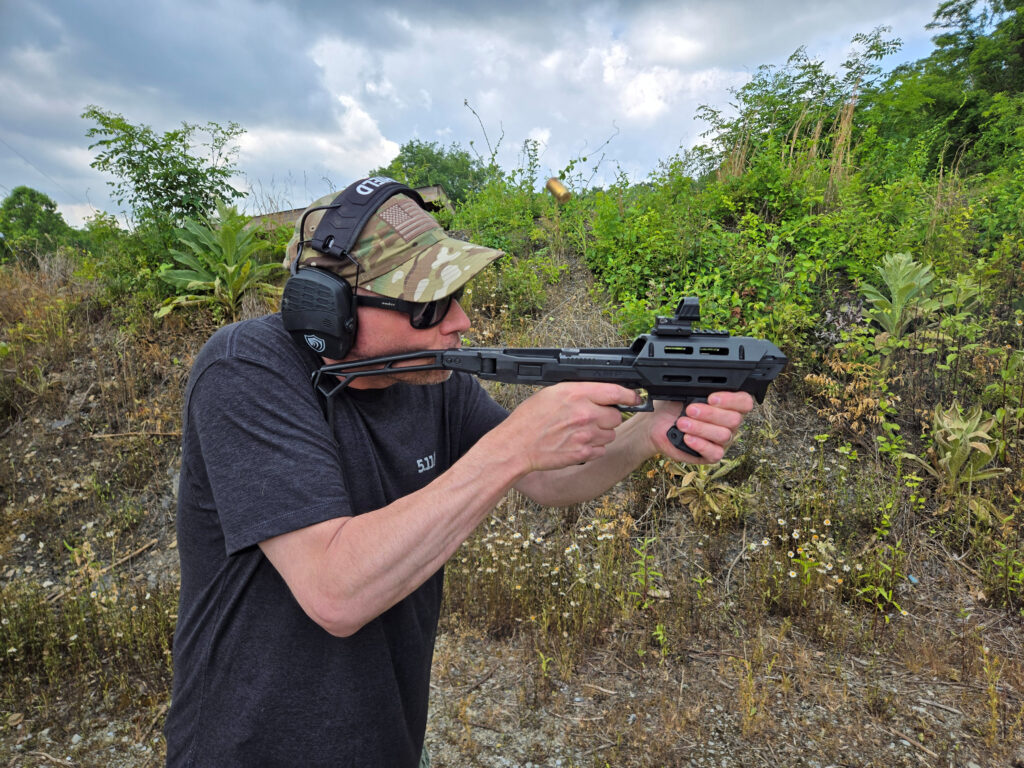
I did notice some interference with my buddy’s phone one day. Every time he pulled it out and would be texting, I would get some interference. It didn’t make the headset unusable by any means, but it was noticeable.
I was easily able to hear normal conversation, but the system always kicked in when we were shooting. The 0.5 millisecond delay may as well not exist as far as I could tell. I could never detect an obvious transition between being able to hear and the sound reduction kicking in when needed. It’s pretty seamless.
Full Protection
The Earshields worked well with everything I shot. I had some full-power .357s out of a 4-inch barrel that were real boomers, but no issues. The same for a number of short-barreled rifles, shotguns, and .30-06’s. I thought they did a great job of protecting what hearing I have left.
They’re a pretty low-profile muff, too. I had good luck having them stay in place, even when getting a good cheek weld on various rifles and shotguns. Better than some muffs I’ve used, which get knocked loose with long guns. If full muffs do bother you for long gun shooting, though, read on. The Earshield Scout might be what you need.
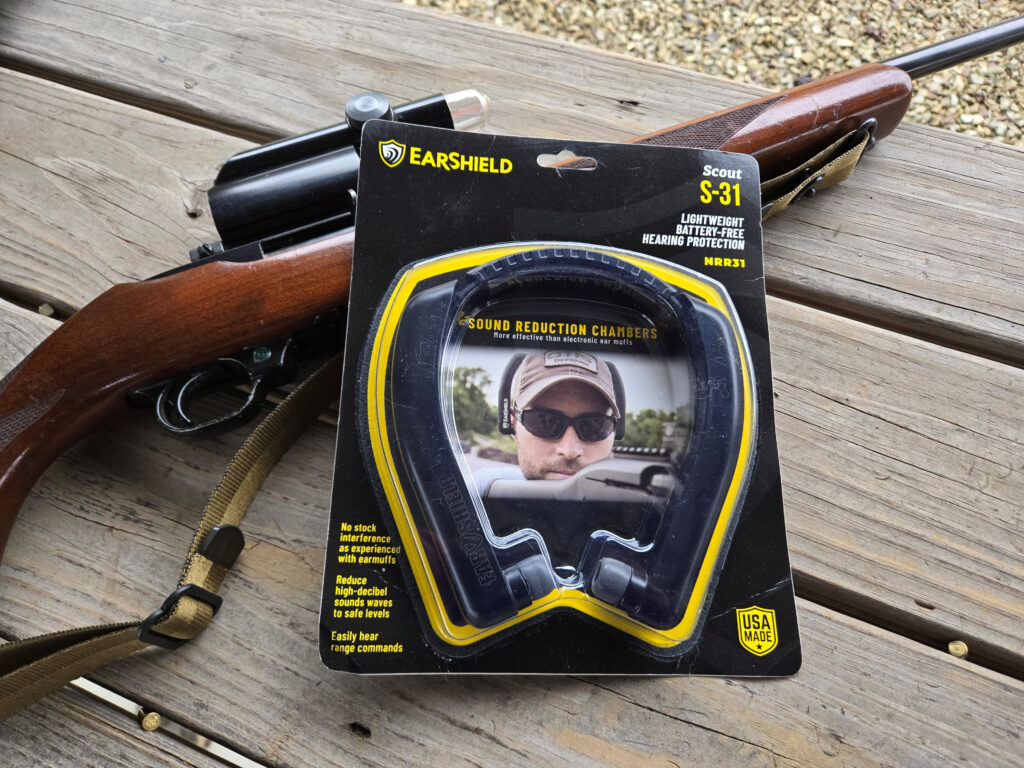
EarShield™ Scout
I’ve actually used a set of Otis’s EarShield Scout headsets for years. I got a set of the 26dB ones for a review in a now-defunct print gun mag ages ago, and it’s been part of my range kit ever since. These are honestly one of the best bangs for the buck in hearing protection I’ve ever used.
Although my old ones still work fine, I picked up one of the newer 31dB sets to try out. I figure a little extra hearing protection at my age can’t hurt.
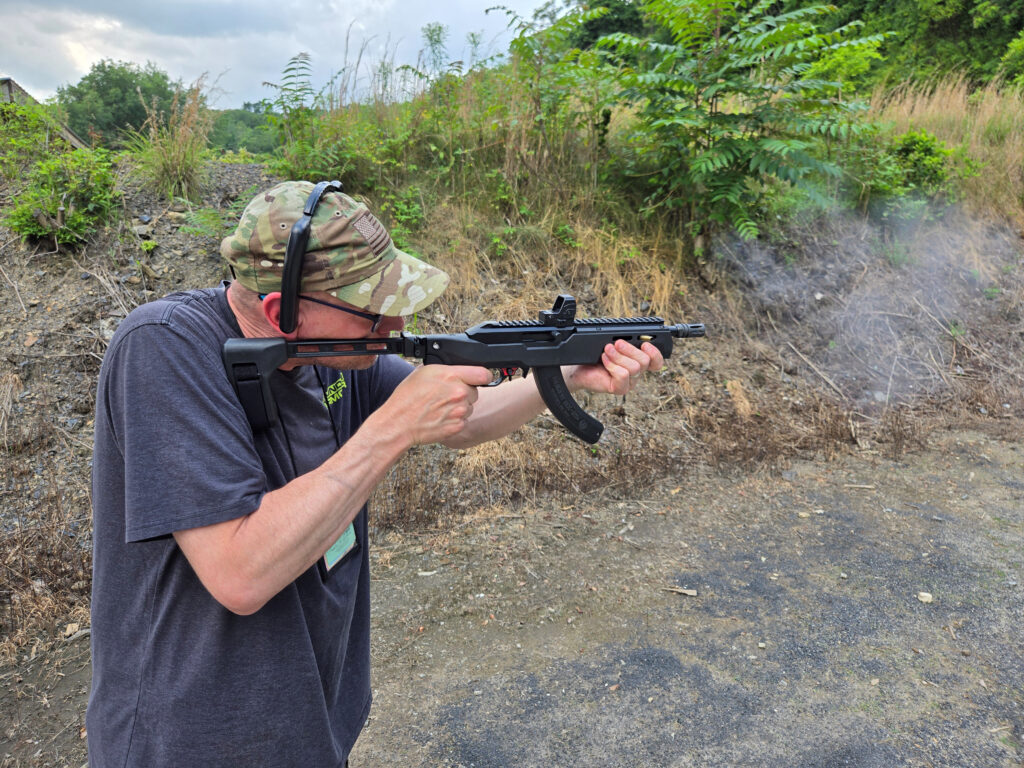
The Earshield Scout uses what Otis calls Sound Reduction Chamber Technology. Rather than a battery-operated system, it uses a series of chambers integrated into the side pieces of the headset. These chambers allow you to hear normal conversation, such as range commands, but still cut off high-decibel noise. Honestly, I don’t understand how it works. Science I guess. Or magic. I’ll take it, whichever one it is.
The Scout is extremely lightweight and comfortable to wear. It’s low profile too, and works well when shooting long guns. It doesn’t interfere with your cheek weld like full muffs sometimes can. Otis mentions that they’re cool to wear, too, and that’s true.
This summer has been brutal, and some of the days I was shooting, the Ranger muffs got pretty hot to wear. The Scout doesn’t fully cover the ear, so you have a lot more airflow. The Earshield Scout folds up and won’t take up much space in your range bag either.
Earshield Scout Passive Protection
Although the Scout doesn’t amplify your hearing like the electronic Ranger muffs, it still works extremely well. You can hear what’s going on around you, but it cuts off the dangerous, higher-decibel noise.
The best part of the Scout is the price, though. The 26dB model has an MSRP of just $23.59. The 31dB model is slightly more at $29.49. That’s a bargain for how well the Scout works. At that price, you can afford to buy a couple of sets and leave them in your various gun cases or range bags so that you’re never without a good set of ear pro.
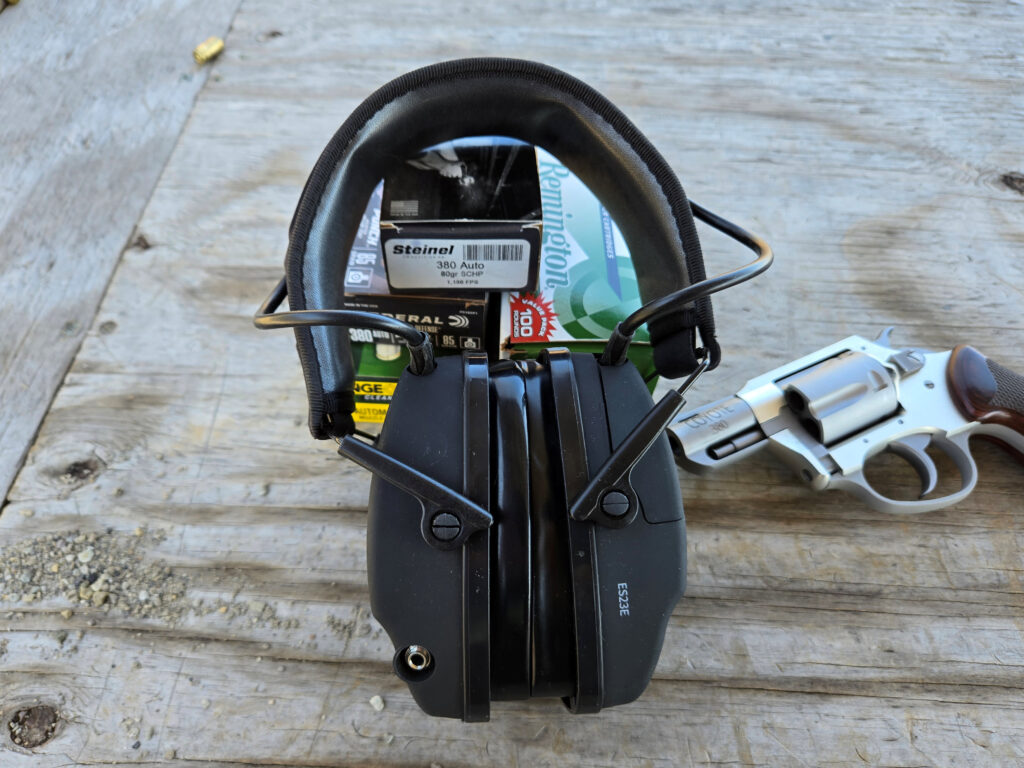
Two Great Options
Whether you want the amplified sound and full muff setup of the Earshield Ranger or the inexpensive, lightweight Earshield Scout, Otis has you covered. Both systems work extremely well and are reasonably priced for the features they offer.

